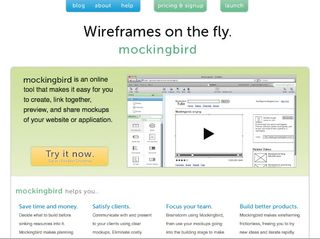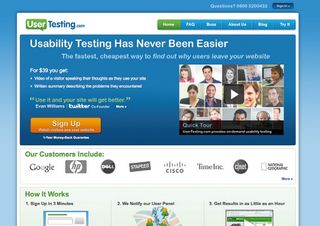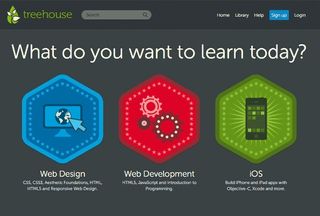How to launch a web startup
Running a startup is like a rollercoaster, both fun and terrifying. Ryan Carson of Treehouse shows you how to get your startup on track
This article first appeared in issue 224 of .net magazine – the world's best-selling magazine for web designers and developers.
So you want to launch a startup company? First you need a good idea. Where do entrepreneurs get their inspiration from? Well, most great ideas are born out of pain: you’ve got a problem and so look for a way to fix it.
Once you’ve got your idea, stop and ask yourself this: do I really care about solving this problem? Am I willing to spend the next five to 10 years helping people who have this problem?
Bear in mind that it takes a long time to build, launch and run a successful company. It’ll be the hardest thing you’ve ever done, with thousands of hours of boring and frustrating work. Yes, there are some tremendously exciting moments as well but they’re short and infrequent. If you’re tackling a problem that you don’t understand or don’t truly care about, then stop right now. You’ll save yourself years of pointless labour and piles of cash.
However, if you are excited about solving a problem and have intimate knowledge of the area, then you’re on to something exciting. If you’re successful you can have a positive effect on the world while making a healthy living along the way.

Testing your idea
So you’ve got a burning passion to fix a problem and you’re ready to quit your nine to five. The next step is to test your idea with potential customers:
- Sign up for the free trial of MockingBird.
- Mock-up your homepage and the most important product page. You don’t need to be a designer to do this.
- Ask strangers in your target market to have a look at the home and product pages, and ask them two questions: a) What is it? b) Would they pay for it? If so, how much?
If the majority of people you ask understand what the product is, and say they’d pay for it, then you’re on to a winner.
A great way to find strangers to test your idea is through Twitter. Ask for folks who fit your target market and have 10 minutes to spare to give their opinion on your startup idea. If you don’t have enough followers to do this, you might have to spend a little cash on a service such as usertesting.com.
If you go down this route, you can pick your rough target demographic and give them the two tasks mentioned earlier. Once you’ve got some evidence that you’re on to a winning idea, it’s time to move on to the minimum viable product (MVP).

MVP
Now that you’ve got a solid idea, it’s time to build your MVP. This is a simple version of your product that solves the most basic needs. All the bells and whistles have been cut and it’s the absolute minimum you can offer your potential customers in order to get them to part with their cash.
It shouldn’t really be an application at all, more a hacked-together app that appears to be functional. It doesn’t have an ecommerce backend, a CMS, or even dynamic content. It could literally be flat HTML with hard-wired content.
Groupon did a great job getting its MVP live. The company may be valued in the billions now, but it started with a simple WordPress installation and a PayPal button.
So how did they do it? They asked the pizza place downstairs if they’d be willing to do a buy-1- get-1-free deal to generate more business. After the pizzeria agreed, the Groupon team installed WordPress and published a ‘Buy 1 Pizza, Get 1 Free’ post with a PayPal button. They emailed the folks in their building about the deal and quickly sold 20 coupons. That is a perfect example of an MVP.
The goal of your MVP is to test whether people will part with their hard-earned cash for your idea. If you get any traction, then you’re on to a winner.
Now that you’ve got your MVP deployed and real customers paying you some cash, it’s time to start building your team.

Who should you hire?
At a minimum, you’ll need a designer and a developer; ideally you’re one (or both) of those people. If you’re not, then you’ll need to go out and find them. You have the choice of bringing the other person on as a co-founder or employee.
Employees will expect to be paid £30,000- £50,000 depending on ability; co-founders will expect to be paid less until you break even, but then they’ll expect to get 30-50 per cent of the company. The primary benefit of a co-founder is that you have someone to share the load and take the journey with you. The obvious downsides are the dilution in equity and the potential relational problems that can break up your company. If you choose a co-founder, it’s just as serious as dating. Make sure you want to work with this person, for better or worse, for the next five to 10 years.
Burning up the cash
Once you’ve decided how big your team is going to be, you need to calculate what your monthly costs will be, or your ‘burn rate’. Here are the costs you need to consider:
Get the Creative Bloq Newsletter
Daily design news, reviews, how-tos and more, as picked by the editors.
- Salaries (the biggest cost)
- Bookkeeping
- Rent
- Marketing
- Internet
- Hosting
- Benefits
Recruiting talent
Once you’ve nailed down your monthly costs, it’s time to start recruiting. The best possible source here is trusted referrals: ask your friends and contacts if they know of anyone who’s looking for work that has the right skill set.
The other route is to place ads on sites that your potential hires might frequent. You’ll have to live with your choices, so be picky and take your time.
Pricing your product
The next thing you need to decide is the initial pricing of your product. Freemium is all the rage these days: offering a free product and encouraging people to upgrade to a paying account.
However, I would highly recommend charging for your product from day one. This forces you to deliver a product that has value for your customers, and makes customers commit to you and invest emotionally in the product. If they’re not paying for your product, it’s easy to walk away.
The primary goal is to experiment with prices and see what works. You can always launch with one price and then change it later. You will need to keep your current customers on their pricing structure, but you can sign up all your new customers at another price, to test conversion rates and overall profitability.
Funding: bootstrapped and proud?
There are three primary funding options available to you: bootstrap, debt and equity.
Before we discuss those, you need to create a cashflow spreadsheet so you know how much money you need to launch your startup.
Start by estimating how many months it will take you to reach break-even. This is the point where your company is bringing in the same amount of money that you are spending each month.
At this point, however, we are not talking about turning a profit. There are plenty of legal accounting tricks you can use to make your company profitable, but there is only one way to measure if you’re break-even: when cash coming in is the same as your expenditure.
I’d recommend that you have at least six to 12 months’ operating expenses in the bank before you start. This will give you enough time to create your MVP (one month) and then properly test the market and gain traction.
It’s hard to guess how many months it will take to reach break-even because there are two factors, only one of which you can control:
- How long it takes to build the product.
- How quickly customers will sign up.
Initially, you should focus on the first point, while having a solid plan for how you plan to create demand to drive paid sign-ups.

Bootstrap
Bootstrapping is the practice of funding your startup yourself. A lot of people do this by saving the cash from their day job or using their life savings.
The benefits of bootstrapping are that you don’t have to give away any of the company’s equity or spend time pitching your idea to the bank.
The obvious downside is that, if your startup doesn’t work out, you lose your own personal cash and are left without a savings cushion. We bootstrapped Treehouse with profit from our events company.
Debt
If you don’t bootstrap, then the second funding option is raising debt. There are two primary ways to do this: with a bank loan or by borrowing from friends and family.
With either of these options, you’ll need to prepare a presentation that explains your idea, why you think it will work and how much money you’ll need to get cash flow to break-even.
If you’ve launched an MVP and have some traction, your bank will be slightly more accommodating, but the brutal truth is that it’s very hard to get a bank loan in the current economic climate. If you’re in the UK, your best bet is the Enterprise Finance Guarantee.
One major disadvantage of debt is that you’ll have to factor chunky monthly loan repayments in to your cashflow as well as signing a personal guarantee for the bank, which will put you (and any other directors) on the hook personally if the company can’t repay the loan.
Equity
Raising equity finance means selling a portion of your company’s shares in return for cash. The primary sources of equity financing are angel investors and venture capitalists.
Benefits of equity financing:
- No loan to repay
- Investors can be a valuable source of help and advice
Drawbacks of equity financing:
- You have to give away part of the company.
- Time consuming to sort out (and may not happen at all).
- It introduces another level of complexity into the business.
Treehouse recently raised $600,000 from angel investors and I’m very glad we’ve done it. Here’s why:
- The investors are very smart and will help the company grow.
- We have a good chunk of money to quickly grow the team.
- We didn’t have to give away very much of the company, as we were profitable.
If you’re thinking of raising equity finance, you have to read Venture Deals by Brad Feld and Jason Mendelson.
There are a lot of pitfalls to avoid that could be catastrophic to your business. Make sure that you understand all of the term sheet before you enter into any financing deals.
Key metrics

There are several vital numbers that you need to measure when running a software as a service (SAAS) company. To make process easier, you should build a simple dashboard that displays all these numbers so you can keep an eye on them.
Knowing these numbers will allow you to measure the health of your startup. The key metrics are lifetime value, cost per acquisition, churn, conversion rate and happiness index.
Lifetime value (LTV): LTV is calculated like this: the monthly revenue per month per customer multiplied by the average number of months customers use your service. This gives you a basic idea of how much value a customer will give you over the time they stay with you. For example, if you charge £25 per month for your service and the average length of time a customer stays with you is 10 months, then your LTV would be £250.
Cost per acquisition: Cost per acquisition (CPA) is simple to calculate: it’s the amount of money that you spend when acquiring a new customer. For example, if you pay £0.10 per click on Google AdWords and it takes you 100 clicks in order to get one customer, your CPA would be £10.
Churn: Churn is the percentage of customers who cancel each month. For example, if you have 100 customers and 10 cancel in a month, then you have a 10 per cent churn.
Once you know your churn rate, you can calculate the average number of months a customers stays with you (their ‘lifetime’). Simply take the number of customers and divide it by your churn rate. In this example that would be 100/10, which equals 10, so your average customer stays with you for 10 months.
Conversion rate: Conversion rate is calculated like this: the number of people who sign up to your service divided by the unique number of visitors to your site, multiplied by 100. For example, if you have 10,000 unique visitors to your site this month, and 75 sign up as customers, you have a conversion rate of 0.75 per cent.
We’d advise using Google Analytics to measure conversions and unique visitors. Measuring conversions is pretty technical and is beyond the scope of this article, but a bit of Googling will give you everything you need to know.
Happiness index: Understanding your happiness index will help you understand why people cancel or leave your service, which in turn will help you decrease your churn. As you can imagine, churn is the most destructive force on a startup so it’s important to keep it as low as possible.
Each startup will have different metrics that will be used to calculate their happiness index. We calculate this at Treehouse like so: the number of videos watched this month multiplied by the number of badges unlocked this month, multiplied by the number of times the site has been visited.
We used our happiness index to help decrease the churn at Treehouse like this: we calculate the happiness index of all customers who are 90 per cent of the way through the average lifetime (in the example given above, that would be customers who are in month nine out of 10 months). If the number is below a certain value then we know that customer is likely to cancel, so we will send them a special email asking if they’re happy with the service and if there’s anything we can do to help.
The key to reducing churn is to be proactive: try to figure out why people cancel and then do something to fix it before they leave.
Launching a startup means you’re creating a business, not a side project. It takes an enormous amount of hard work, focus and commitment. But the rewards can be enormous too, and we’re lucky enough to live in an era when there’s absolutely nothing to stop us. So what are you waiting for?
Find the best online web design training tools at our sister site, Creative Bloq.

Thank you for reading 5 articles this month* Join now for unlimited access
Enjoy your first month for just £1 / $1 / €1
*Read 5 free articles per month without a subscription

Join now for unlimited access
Try first month for just £1 / $1 / €1
The Creative Bloq team is made up of a group of design fans, and has changed and evolved since Creative Bloq began back in 2012. The current website team consists of eight full-time members of staff: Editor Georgia Coggan, Deputy Editor Rosie Hilder, Ecommerce Editor Beren Neale, Senior News Editor Daniel Piper, Editor, Digital Art and 3D Ian Dean, Tech Reviews Editor Erlingur Einarsson, Ecommerce Writer Beth Nicholls and Staff Writer Natalie Fear, as well as a roster of freelancers from around the world. The ImagineFX magazine team also pitch in, ensuring that content from leading digital art publication ImagineFX is represented on Creative Bloq.
